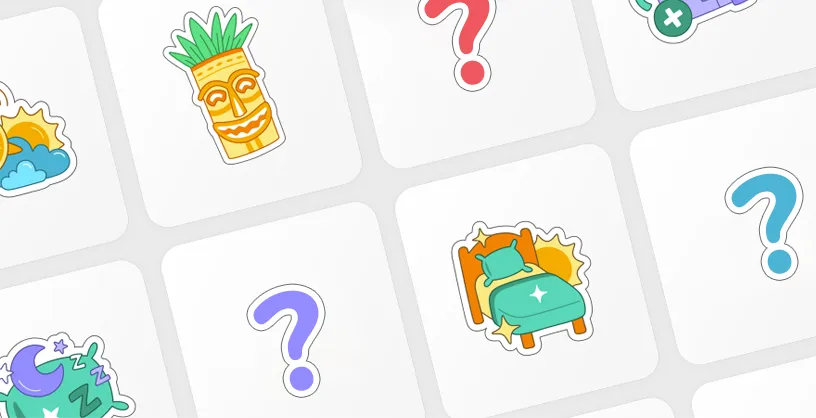
Teenagers certainly do not have a good reputation for handling their emotions well. The passive-aggressive slamming of a door, sarcastic eye-roll, or the age-old silent treatment are common responses to negative or overwhelming emotions.
They have a lot of emotions, and many don’t have the skills to regulate them. Their brains are undergoing rapid development, explaining the emotional confusion they may often feel.
It’s not all doom and gloom. There are tools available for you as a parent to help them better manage their emotions - emotional agility is one of them.
What is Emotional Agility?
Susan David, Harvard Medical School Psychologist and bestselling author of Emotional Agility, describes the concept as the ability to mindfully navigate positive and negative emotions.
When emotionally agile, we treat our emotions as data, not directives. There is a space between feeling an emotion and acting on it.
Just because we feel angry at our parents does not mean we should storm out of the room and slam the door. The emotionally agile can hold space for their emotions and ensure their actions align with their values.
What the world often perceives as 'negative' emotions (anger, sadness, fear...), the emotionally agile see as guideposts - "They are teachers, friends to be listened to, taken at face value, and discarded in good time."
Teenagers and their Emotions
During adolescence, different areas of the brain mature at different times. The prefrontal cortex, responsible for planning and decision-making, matures far more slowly than the brain's limbic region, where emotions are centered.
Similarly, the connections between the emotional and rational parts of the brain are still developing. Because of this, teenagers have all of the emotions and none of the skills to regulate them.
Bettina Hohnen, a Clinical Psychologist at University College London, explains, "When a teen is highly emotional and highly motivated, the prefrontal cortex can't override that, so they make decisions that are more emotionally driven."
This means that teens have less ability to regulate their emotions and responses during the heat of the moment than adults.
Five Steps to Emotional Agility
Teenage brains are, however, in a constant state of change. Pathways are constantly created in the brain in response to learning and experiences - this process is called neuroplasticity.
Recent research found that teenagers raised in a safe and loving environment have stronger neural pathways resulting in emotional regulation and intelligence.
This research suggests that parents, teachers, and coaches can play a role in assisting teenagers to become emotionally intelligent and agile.
5 Steps To Help Your Kid Become Emotionally Agile
1. Feel It
When faced with a crying child or an angry teenager, telling them to 'calm down' or offering them a tasty treat or an hour of screen time to distract them from their woes is tempting. It is even more tempting to downplay their issues, which may seem trivial compared to your own ‘real life’ issues.
Children can only learn and recognize that negative emotions eventually pass if they are allowed to feel them. 'Fixing' their upset emotions with a sugary snack only teaches them to bottle their emotions.
The best way you can help your child show up to their emotions is to show up with them. Create a space where they are allowed to show sadness, anger, or frustration.
2. Show It
Showing up to emotions means embracing their outward expressions.
Many families have unspoken rules about how emotions should be displayed in the home. 'Boys don't cry' or 'We don't do anger here' or 'Brush it off.' Though we may do it with good intentions, we unintentionally send a message that emotions are to be feared.
A great way to co-pilot with your child through this challenging stage is to ask questions -- if they let you. Talk to them and ask what their emotions feel like in their body, where they feel them, and what they feel like. Allow them the space to feel and show their feelings without judgment or fear.
3. Label It
Emotions are less scary when they can be named. Many of us quickly generalize our emotions as 'sad' or 'happy', or 'stressed' when they can be broken down and further defined. Disappointed, betrayed, and unmotivated can all feel like sadness.
The ability to break our feelings down into more specific feelings helps us to take appropriate action and figure out the best way forward.
Throughout every step of the process, it is very helpful to remind your children that you experience these feelings too. By doing so, they will feel less alone and more normal.
4. Watch It Go
By learning to embrace and walk through their emotions, children will learn that while emotions and feelings are valid and we can learn from them, they are temporary. They will pass.
Emotions have a beginning, a middle, and an end. Emily and Amelia Nagoski, authors of Burnout: Solve your Stress Cycle, compare emotions to tunnels -- 'If you go all the way through them, you get to the light at the end. Exhaustion happens when we get stuck in an emotion.'
Just as identifying and embracing an emotion was important before, releasing the emotion and distancing yourself from it is now critical.
Without doing this we are prone to brooding and over-identifying with an emotion which is just as detrimental as bottling an emotion.
5. Walk Your Why
David says, 'The way we engage with our emotions shapes our actions.' That is not to say that all emotions are to be acted upon or can be resolved by any given behavior. When action is required, Dr. David offers a powerful guideline called 'walking your why.'
Once the distance has been created between ourselves and the emotion, it’s time to act in alignment with our values or goals. This is our ‘why’. It’s what David calls our ‘Choice Point.’
A great example is a scared child standing on the edge of a high diving board. As a parent or coach, do you tell them, 'It's not that high, just jump!' or tell them, 'It's too high, don't jump!'
David would say neither. She'd suggest a conversation around the 'why.' Why is jumping off the high diving board important, and how does it align with their goals or values?
Do they want to jump to impress their friends, perhaps it would be better if they stepped down. Do they want to make it onto the diving team, jumping despite their fear would be better. In that case, a better response would be -- 'That looks scary, but you've got this!'
Final Thoughts
Emotions should not be feared or avoided, nor do they make us weak. They are data points that help us identify the appropriate course of action. Teenage brains are developing rapidly, making them susceptible to learning. It’s a great time to teach them the skills necessary for emotional intelligence!
Recommended Resources
Susan David, Emotional Agility: Get Unstuck, Embrace Change and Thrive in Work and Life
Allison Edwards,_ Flooded: A Brain-Based Guide to Help Children Regulate Emotions_
Bettina Hohnen, Jane Gilmour and Tara Murphy, The Incredible Teenage Brain.
How many core habits and skills is your child missing?
Take our short quiz and find out.
Take our quiz
_Z2dC98e.webp)

